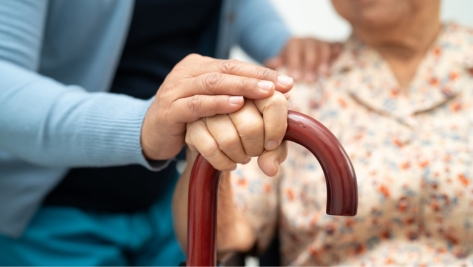Secondary Victim Claims and Medical Negligence – what is the future after Paul? (Part 1)

On 11th January 2024 the Supreme Court handed down judgement in the conjoined appeals of the Secondary Victim claims Paul and another v Royal Wolverhampton NHS Trust, Polmear and another v Royal Cornwall Hospitals NHS Trust, and Purchase v Ahmed (referred to collectively as “Paul” in this post). The Judgement is essential reading for practitioners and can be found in full here alongside a Press Summary here.
In a majority ruling by Lord Leggatt and Lady Rose (with Lord Burrows alone dissenting), the court rejected the appellant’s claims, primarily on the basis that they each arose from the perception of a Primary Victim suffering a “medical crisis” but not an “accident”, and an “accident” was an essential component for a viable Secondary Victim claim. Furthermore, the Justices found that the Defendants in all three cases did not owe a duty of care to the Claimants to protect them from the psychiatric trauma of witnessing the deaths of their close relatives, even if those deaths would not have occurred but for the Defendants’ medical negligence.
This is undoubtedly a landmark decision that will be pored over and debated by practitioners for years to come. In this – the first in a series of blogs – I will consider just one of the key questions arising from this judgement, which I suspect will form the subject of future litigation.
What is an “accident” in a medical setting?
The judgement is clear that identifying an “accident” is a necessary component of a viable Secondary Victim claim. An “accident” in this context is defined by the court at paragraph 24 of its judgement as an unexpected and unintended event in which injury (or the risk of injury) is caused by violent external means. A road traffic collision will generally fit this description. However, in the court’s view it does not necessarily include a “medical crisis” involving suffering or death caused by illness.
By mandating that Secondary Victim claims arise from an “accident” the court has undoubtedly restricted the range of medical mistakes that will give rise to such claims in the future. For example, any negligent act or omission which causes a patient increased suffering and death from an internal, non-violent ailment only (such as most diseases) would appear to be outside of the scope of a potential Secondary Victim claim. Paul, Polmear and Purchase related to deaths caused by a heart attack, pulmonary veno-occlusive disease and severe pneumonia respectively. It is therefore likely that future potential Secondary Victims will struggle to succeed in claims where a Primary Victim has suffered primarily from one of these same conditions or very similar conditions.
On the other end of the scale are those injuries that can occur in a clinical setting that obviously will qualify as a Paul “accident”. I would argue that burning injuries and most crushing injuries fall into this group. Also in this category would be any injury sustained in a fall, whether that be in the case of a child (for example where a midwife has carelessly dropped a baby) or an adult (where perhaps a hospital has failed to deploy adequate fall prevention measures in the case of a vulnerable elderly patient). Certain surgical mistakes also seem likely to meet the necessary criteria, for example a surgeon operating on the wrong part of a patient’s body, or inadvertently severing a blood vessel at a surgical site (although bringing a Secondary Victim claim arising from such events would be complicated by the fact that it is unlikely the patient’s loved ones would be at the surgical table to witness the mistake, although they may well witness the aftermath of it).
In between these two ends of the spectrum, there are a potentially limitless number of other types of injurious event that are very difficult to categorise as either an “accident” or not an “accident”. The Supreme Court itself provided an example of just such a case at paragraph 205 of its judgement, in the form of a doctor injecting a patient with a wrong dose or a wrong drug, inducing an acute adverse reaction which is witnessed by a close relative. However, there are many other conceivable borderline “accident” cases; for example, would leaving a foreign body in a patient during surgery qualify? What about injuries to a neonate caused by a mother’s contractions during a negligently managed delivery? Or injuries to a patient caused by the unconscious actions of their own body, for example during pregnancy or in the throws of a seizure – are these forces sufficiently “violent” and “external” to meet the court’s criteria? I do not think there is a clear answer to these questions, which means that further debate and confusion in this area of law is sadly inevitable.
Comment
In the earlier claim of Frost v Chief Constable of South Yorkshire [1999] 2 AC 455 Lord Hoffman complained that the search for principle in the law around Secondary Victim claims had been called off. In Paul, these remarks were criticised, but I fail to see that the Supreme Court’s judgements leaves the law in a more principled position than Lord Hoffman found it. As Lord Burrows pointed out in his dissenting judgement in Paul, the distinctions drawn by the Supreme Court between a death caused by an “accident” and a death caused by a heart attack seem semantic rather than substantial, and to permit a potential Secondary Victim to recover damages in the former case but not in the latter seems arbitrary and potentially unjust.
Although the reaction of many medical negligence practitioners to this judgement has been one of disappointment (myself included), nevertheless it does leave scope for future Secondary Victims of medical negligence to succeed in their claims. However, there will be an extra onus on practitioners to prepare these cases as robustly as possible in light of the additional hurdles they now have to surmount. One such additional hurdle will be the Supreme Court’s comments in Paul doubting whether the scope of a doctor’s duty of care can extend to a patient’s family members. I will consider that issue in a future post.
Please note
The information on the Anthony Gold website is for general information only and reflects the position at the date of publication. It does not constitute legal advice and should not be treated as such. It is provided without any representations or warranties, expressed or implied.
Related Insights
- November 13, 2023
Will I need to go to a trial if I bring a clinical negligence claim?
- September 22, 2023
Fixed Recoverable Costs, Clinical Negligence and Access to Justice – an Update
- August 8, 2023
Compensation Obtained Following Glaring Surgical Error
Our Latest Injury & Medical Claims Insights
- September 26, 2025
Intermediate track injury claims: the rise of early settlement offers
- August 26, 2025
Anthony Gold Solicitors welcome Helen Whittam as a new Support and Rehabilitation Coordinator in the Injury and Medical Claims Team
- August 19, 2025
Contributory negligence and children
- August 13, 2025
Video: From tragedy to triumph – Eliezer’s journey after a life-changing accident
- July 9, 2025
What is Contributory Negligence and How Could it Affect Your Claim?
- June 18, 2025
Hobson v Hammond and another [2025] – when is an omission to investigate symptoms illogical?
Latest Articles
View allGuide: October 3, 2025
Guide: October 3, 2025
Contact us today
"*" indicates required fields
Contact the commercial
& civil Dispute team today
"*" indicates required fields
Contact the Conveyancing team today
Contact the Conveyancing team today
Contact the Wills, Trusts
& Estates team today
Contact the Court of
Protection team today
Contact the Employment Law team today
Contact the Clinical Negligence team today
Contact the Family & Relationships team today
Contact the Personal Injury Claims team today
Contact the leasehold & Freehold team today
Contact the Corporate & Commercial team today
Contact the housing & disputes team
"*" indicates required fields















